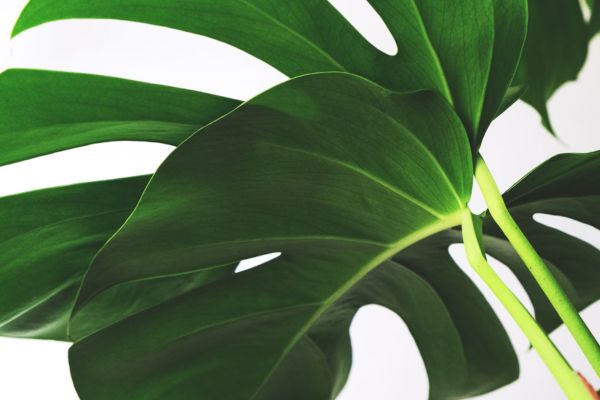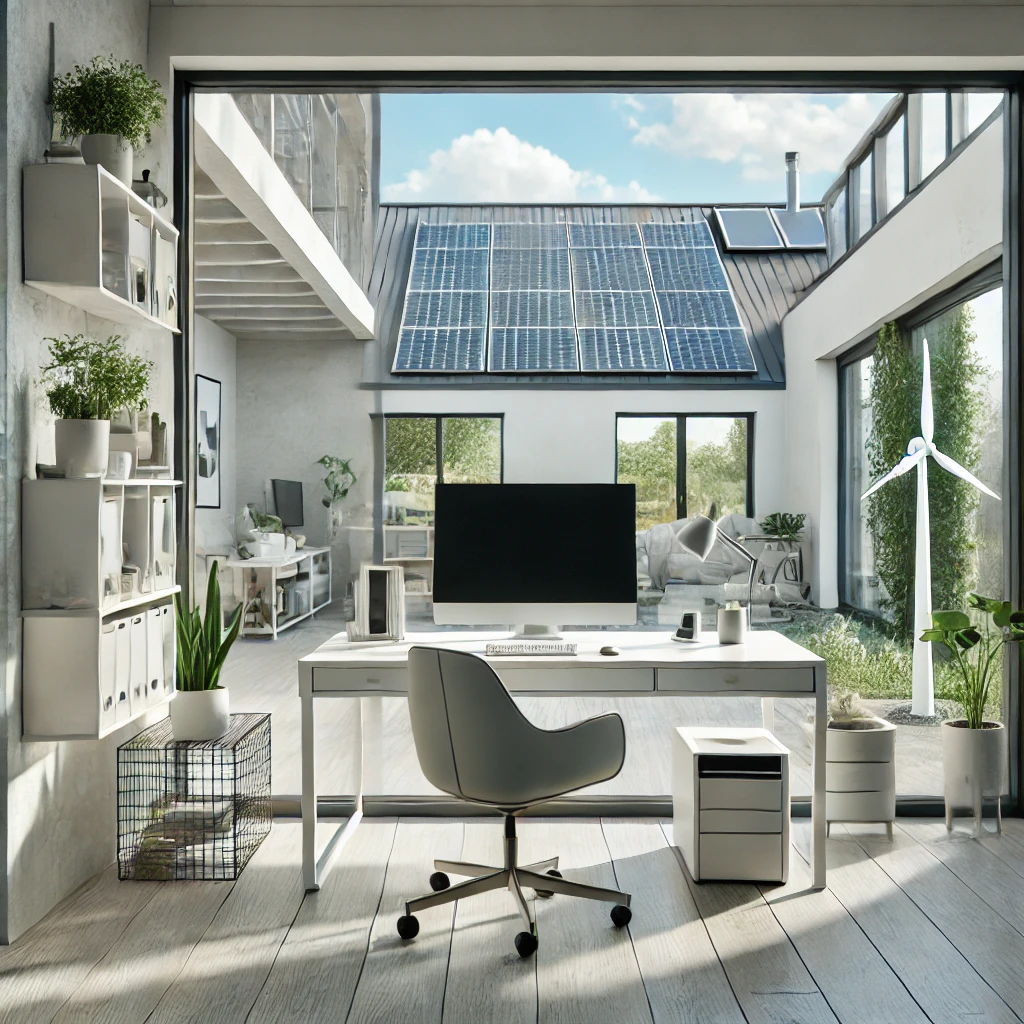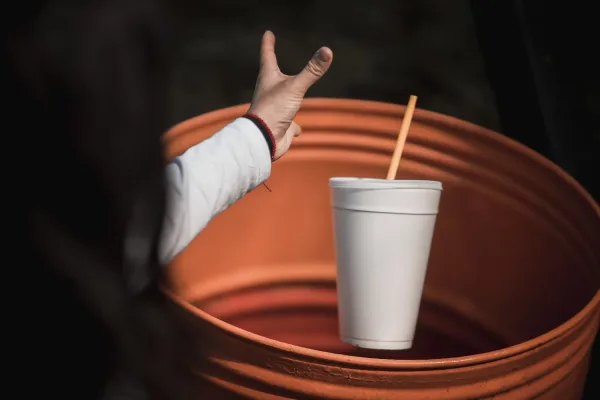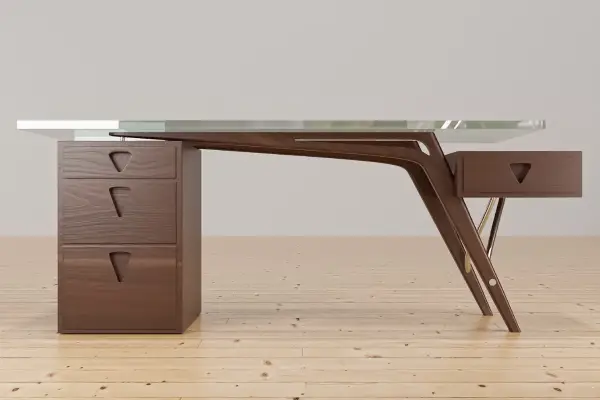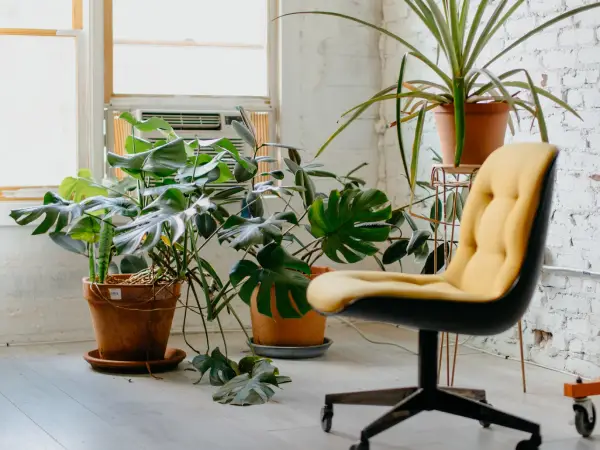Minimalism is more than just a design trend; it’s a lifestyle that promotes simplicity, functionality, and a sense of tranquility in your environment. In the context of office decor, minimalism helps create a clean, clutter-free space that fosters productivity and focus. A key element that can enhance a minimalist office is the addition of plants. Not only do they bring a touch of nature indoors, but they also offer numerous benefits that can improve your work environment.
Incorporating plants into your minimalist office decor can enhance the aesthetic appeal while providing several practical advantages. Plants improve air quality by filtering out toxins, increase productivity and concentration, and contribute to a sense of well-being and reduced stress levels. The greenery can add life to the clean lines and neutral tones typical of minimalist spaces, creating a more inviting and dynamic atmosphere.
This article aims to guide you through the process of choosing the right plants for your minimalist office. We will explore the benefits of having plants in your workspace, the principles of minimalist plant selection, and the best types of plants suited for a minimalist office. Additionally, we’ll provide tips on plant placement, care, and maintenance, as well as DIY and budget-friendly ideas to help you incorporate greenery into your office without compromising on style or simplicity. Whether you’re starting from scratch or looking to enhance your existing office setup, this guide will help you create a workspace that is both beautiful and functional.
Benefits of Office Plants
Improved Air Quality
Plants are natural air purifiers, absorbing carbon dioxide and releasing oxygen, which helps to create a healthier indoor environment. Certain plants, such as snake plants and pothos, are particularly effective at removing toxins like formaldehyde, benzene, and trichloroethylene from the air. By improving air quality, plants can reduce the risk of respiratory issues and other health problems, making your office a safer and more pleasant place to work.
Increased Productivity and Focus
Studies have shown that having plants in the office can significantly boost productivity and concentration. The presence of greenery helps reduce mental fatigue and improve cognitive function. A splash of green in your workspace can create a more stimulating and refreshing environment, which in turn enhances your ability to focus on tasks and think creatively.
Enhanced Aesthetic Appeal
Plants can soften the stark lines and neutral tones typical of minimalist design, adding a touch of natural beauty and warmth to your office. The visual appeal of plants can create a more inviting and comfortable workspace, making it a place you enjoy spending time in. Whether you opt for a single statement plant or a few smaller plants arranged thoughtfully, greenery can elevate the overall look and feel of your office.
Reduced Stress and Improved Well-Being
The presence of plants has been linked to lower stress levels and improved mood. The calming effect of nature, even in small doses, can help create a more relaxed and positive atmosphere in your office. Plants can also contribute to a sense of well-being by providing a connection to the natural world, which is especially valuable in an indoor work environment. The act of caring for plants, even if it’s just watering them occasionally, can also be a therapeutic and rewarding activity.
By integrating plants into your minimalist office, you not only enhance the visual appeal of your workspace but also create a healthier, more productive, and enjoyable environment. The following sections will guide you on selecting the right plants, placing them strategically, and maintaining them with ease.
Principles of Minimalist Plant Selection
Simplicity and Functionality
In minimalist design, every element should have a purpose and contribute to the overall aesthetic without creating clutter. When choosing plants for your minimalist office, opt for those that have clean lines and simple forms. Select plants that are visually striking yet understated, adding to the serene and uncluttered look of your workspace.
Clean Lines and Minimalistic Pots
The pots you choose for your plants are just as important as the plants themselves. Look for pots with sleek, clean lines that complement the minimalist aesthetic. Neutral colors such as white, gray, black, or natural tones work well in minimalist offices. Avoid overly decorative or colorful pots that can disrupt the harmonious look of the space. Simple, geometric shapes and smooth finishes are ideal.
Low-Maintenance and Hardy Plants
A minimalist office thrives on simplicity and efficiency, so it’s essential to choose plants that are easy to care for and can thrive in an office environment. Look for hardy plants that require minimal watering and can tolerate low light conditions, especially if your office doesn’t receive a lot of natural light. Low-maintenance plants ensure that you can enjoy the benefits of greenery without spending too much time on upkeep.
Consistency with Office Color Palette
To maintain a cohesive and harmonious look, select plants that complement the existing color palette of your office. If your office features neutral tones, opt for plants with green foliage, which adds a refreshing touch without overwhelming the space. For offices with a bit more color, choose plants with subtle variegation or muted tones that enhance the overall design without clashing.
Harmonizing with Minimalist Decor
The plants you select should integrate seamlessly with other elements of your minimalist decor. Consider the overall theme and style of your office when choosing plants. For instance, if your office has a modern, industrial look, opt for plants with bold, architectural shapes like snake plants or cacti. If your decor is more natural and earthy, plants like pothos or peace lilies can enhance the organic feel of the space.
Selecting the Right Number of Plants
Minimalism is about avoiding excess, so be mindful of the number of plants you introduce into your office. A few well-placed plants can make a significant impact without creating clutter. Focus on quality over quantity, selecting a few standout pieces that enhance the space rather than filling every corner with greenery.
By following these principles of minimalist plant selection, you can choose plants that not only enhance the aesthetic appeal of your office but also align with the simplicity and functionality that define minimalist design. The next section will introduce you to the best types of plants suited for a minimalist office.
Best Plants for a Minimalist Office
Choosing the right plants for your minimalist office involves selecting varieties that not only align with the principles of minimalism but also thrive in indoor environments with minimal care. Here are some of the best plants suited for a minimalist office:
Succulents
Succulents are ideal for minimalist offices due to their sculptural forms and ability to thrive with minimal watering. They come in a variety of shapes and sizes, from rosettes to trailing varieties, and can add a contemporary touch to your workspace.
Air Plants (Tillandsia)
Air plants are perfect for minimalist offices as they require no soil and absorb nutrients and moisture from the air. They can be displayed in creative ways, such as mounted on walls or placed in minimalist containers, adding a unique and modern aesthetic.
Snake Plants (Sansevieria)
Snake plants are known for their hardiness and architectural shape, making them a popular choice for minimalist decor. They can tolerate low light conditions and infrequent watering, making them low-maintenance and suitable for office environments.
ZZ Plant (Zamioculcas Zamiifolia)
The ZZ plant is valued for its glossy, dark green leaves and ability to thrive in low light and with little water. It adds a bold, tropical touch to minimalist spaces and requires minimal attention, making it ideal for busy office settings.
Pothos (Epipremnum Aureum)
Pothos is appreciated for its trailing vines and variegated leaves, which can add texture and interest to your office space. It thrives in low to moderate light conditions and is easy to propagate, making it a versatile choice for minimalist offices.
Monstera Deliciosa
Known for its large, distinctive leaves with natural leaf holes (fenestrations), the Monstera deliciosa is a statement plant that can bring a touch of tropical elegance to a minimalist office. It prefers indirect light and regular watering but can withstand occasional neglect.
Cacti
Cacti are iconic symbols of minimalism, with their striking shapes and low-maintenance requirements. They thrive in bright light and infrequent watering, making them perfect for minimalist offices with ample sunlight.
These plants not only complement minimalist decor with their clean lines and simplicity but also contribute to a healthier and more inspiring work environment. When choosing plants for your office, consider their care requirements, aesthetic appeal, and ability to thrive in indoor conditions. The next section will guide you on how to strategically place and arrange these plants in your minimalist office for maximum impact.
Placement and Arrangement of Plants
Strategic positioning and thoughtful arrangement of plants can amplify the minimalist aesthetic of your office while maximizing their benefits. Here are some tips for placing and arranging plants in your minimalist office:
Strategic Positioning for Maximum Impact
Consider the layout of your office and identify areas that could benefit from the presence of plants. Strategic positioning can create focal points and enhance the overall ambiance:
Near Natural Light Sources: Place plants near windows or areas with ample natural light to support their growth. Ensure they receive enough light without being exposed to direct sunlight, which can cause leaf burn.
Empty Corners or Nooks: Utilize empty corners or nooks to place larger plants like Monstera or snake plants. These plants can fill up space effectively without overcrowding other areas.
Workspace Enhancements: Place smaller plants like succulents or air plants on desks or shelves to bring greenery closer to where you work. This can create a calming atmosphere and improve productivity.
Tips for Maintaining Balance and Symmetry
Maintaining balance and symmetry is key to achieving a harmonious look in your minimalist office:
Grouping Plants: Arrange plants in groups of odd numbers (e.g., threes or fives) to create a balanced and visually appealing display. Group plants with varying heights and textures for added interest.
Spacing Between Plants: Leave enough space between plants to allow them to grow freely and maintain their individual shapes. Avoid overcrowding, which can detract from the minimalist aesthetic.
Consistent Containers: Use uniform or coordinated containers for your plants to maintain a cohesive look. Opt for minimalist pots in neutral colors or simple geometric shapes that complement your office decor.
Combining Plants with Other Minimalist Decor Elements
Integrate plants with other minimalist decor elements to enhance their visual impact:
Natural Materials: Pair plants with furniture and accessories made from natural materials like wood or stone to create a harmonious and organic feel.
Clean Lines and Negative Space: Embrace negative space around plants to emphasize their beauty and simplicity. Minimalist design values clean lines and uncluttered spaces, so avoid overcrowding surfaces with too many objects.
Creating Focal Points with Plants
Use plants strategically to create focal points that draw attention and add visual interest to your office:
Statement Plants: Choose one or two larger, striking plants like a Monstera deliciosa or a tall snake plant to serve as focal points in your office. Place them in prominent locations such as entryways or near meeting areas.
Groupings and Arrangements: Create dynamic arrangements of plants to draw the eye and create visual flow. Experiment with different heights, shapes, and textures to achieve a balanced composition.
By carefully considering placement, arrangement, and integration with other decor elements, you can effectively incorporate plants into your minimalist office to create a serene, inviting, and productive workspace. The next section will cover essential tips for caring for and maintaining your office plants to ensure they thrive in their new environment.
Care and Maintenance of Office Plants
Proper care and maintenance are essential to keep your office plants healthy and thriving. Here are some tips to help you maintain your plants with minimal effort, ensuring they continue to enhance your minimalist office space.
Watering Schedules and Tips
Different plants have varying water needs, so it’s important to understand the requirements of each plant in your office:
Succulents and Cacti: These plants prefer dry conditions and should be watered sparingly. Water them thoroughly but infrequently, allowing the soil to dry out completely between waterings.
Air Plants: Mist air plants with water once or twice a week, or soak them in water for about 20-30 minutes every 1-2 weeks. Ensure they dry completely before placing them back in their display.
Snake Plants and ZZ Plants: These hardy plants can tolerate infrequent watering. Water them when the top inch of soil feels dry, usually every 2-3 weeks.
Pothos and Monstera: These plants prefer slightly moist soil. Water them when the top inch of soil feels dry, typically once a week. Be careful not to overwater, as this can lead to root rot.
Light Requirements for Different Plants
Understanding the light needs of your plants ensures they receive the right amount of sunlight for optimal growth:
Low Light Plants: ZZ plants and snake plants can thrive in low light conditions, making them ideal for offices with limited natural light.
Moderate Light Plants: Pothos and Monstera prefer bright, indirect light but can also tolerate lower light levels. Place them near windows with filtered light for best results.
High Light Plants: Succulents and cacti require bright, direct light to thrive. Position them on windowsills or areas with plenty of sunlight.
Pruning and Cleaning Leaves
Regular pruning and cleaning help keep your plants looking their best and prevent disease:
Pruning: Trim dead or yellowing leaves to encourage new growth and maintain the plant’s shape. Use clean, sharp scissors or pruning shears to make clean cuts.
Cleaning Leaves: Dust can accumulate on plant leaves, blocking sunlight and reducing photosynthesis. Gently wipe the leaves with a damp cloth to remove dust and keep them looking vibrant.
Dealing with Common Plant Issues
Addressing common plant issues promptly ensures your plants stay healthy:
Overwatering and Root Rot: Avoid overwatering by ensuring proper drainage and allowing the soil to dry out between waterings. If you notice signs of root rot (yellowing leaves, mushy stems), remove the affected parts and adjust your watering schedule.
Pests: Inspect your plants regularly for pests such as spider mites, aphids, and mealybugs. Use natural pest control methods like neem oil or insecticidal soap to treat infestations.
Nutrient Deficiency: If your plants show signs of nutrient deficiency (yellowing leaves, stunted growth), consider using a balanced, water-soluble fertilizer. Follow the instructions on the fertilizer package for proper application.
By following these care and maintenance tips, you can ensure your office plants remain healthy and continue to enhance your minimalist workspace. Regular attention to their needs will keep them thriving and looking their best, contributing to a serene and productive environment. The next section will explore DIY and budget-friendly plant ideas to help you incorporate greenery into your office without spending a fortune.
DIY and Budget-Friendly Plant Ideas
Creating Your Own Minimalist Plant Displays
Adding plants to your minimalist office doesn’t have to be expensive. Here are some DIY ideas to create your own stylish plant displays:
Terrariums: Make your own terrarium using a glass container, pebbles, activated charcoal, and a few small plants like succulents or air plants. Terrariums are easy to care for and add a touch of greenery to your office without taking up too much space.
Hanging Planters: Create hanging planters using simple materials like macrame or rope. Hanging plants like pothos or spider plants can add a vertical element to your office decor and free up desk space.
Minimalist Pot Designs: Customize plain pots with minimalistic designs using paint or markers. Stick to simple patterns or monochromatic color schemes to maintain a minimalist look.
Affordable Sources for Purchasing Plants
If you prefer to buy plants rather than create DIY displays, there are plenty of affordable sources to consider:
Local Nurseries and Garden Centers: Often, local nurseries and garden centers have a wide selection of plants at reasonable prices. They may also offer advice on the best plants for your office environment.
Farmers’ Markets: Farmers’ markets are a great place to find unique and affordable plants directly from growers. Prices are often lower, and you can support local businesses.
Online Marketplaces: Websites like Etsy, Amazon, and even eBay have a vast selection of plants and pots available at different price points. Look for sellers with good reviews to ensure quality.
Big-Box Stores: Retailers like IKEA, Home Depot, and Walmart offer a variety of houseplants at budget-friendly prices. These stores often have sales or clearance items that can help you save money.
Propagating Your Own Plants
Propagating plants is an economical way to expand your collection and personalize your office decor:
Cuttings: Many plants, such as pothos, spider plants, and succulents, can be easily propagated from cuttings. Simply cut a healthy stem, place it in water or soil, and wait for roots to develop before planting it in a pot.
Division: Some plants, like ZZ plants and snake plants, can be propagated by division. Carefully separate the plant at the roots and replant each section in its own pot.
Offsets: Certain plants, such as cacti and succulents, produce offsets or “pups” that can be removed and planted separately. Gently detach the offsets from the parent plant and allow them to callous before planting.
Repurposing Containers for Plant Pots
Get creative by repurposing everyday items into stylish plant pots:
Mason Jars: Use mason jars for small plants or succulents. Add a layer of pebbles at the bottom for drainage and a touch of rustic charm.
Tea Cups and Mugs: Turn old tea cups and mugs into unique plant pots. They’re perfect for small plants and add a personal touch to your office decor.
Tin Cans: Clean and paint tin cans to create custom plant pots. These are great for herbs or small plants and can be easily customized to match your office theme.
Wooden Boxes: Repurpose wooden boxes or crates as plant containers. Line them with plastic to protect the wood and fill them with plants for a rustic, minimalist look.
By exploring DIY projects, affordable purchasing options, and creative upcycling methods, you can decorate your minimalist office with beautiful plants without spending a fortune. These approaches allow you to personalize your space while adhering to the principles of minimalism. The final section will recap key points and encourage you to share your minimalist office plant ideas.
Conclusion
Recap of Key Points
In this article, we’ve explored the benefits and principles of incorporating plants into a minimalist office, offering a variety of tips and ideas to enhance your workspace. We discussed the many advantages of having office plants, including improved air quality, increased productivity, and enhanced aesthetic appeal. We also delved into the principles of minimalist plant selection, emphasizing simplicity, functionality, and consistency with your office’s color palette.
We highlighted some of the best plants suited for a minimalist office, such as succulents, air plants, snake plants, and pothos, and provided guidance on their placement and arrangement to maximize their impact. Additionally, we covered essential care and maintenance tips to keep your plants healthy and thriving with minimal effort. Finally, we offered budget-friendly and DIY ideas to help you incorporate greenery into your office without breaking the bank.
Encouragement to Experiment and Personalize
Remember, the key to a successful minimalist office is to find a balance between simplicity and personal expression. Don’t be afraid to experiment with different plant varieties, arrangements, and DIY projects to create a space that reflects your unique style and enhances your productivity. Each plant and pot you choose can add a touch of personality to your office, making it a more inviting and inspiring place to work.

